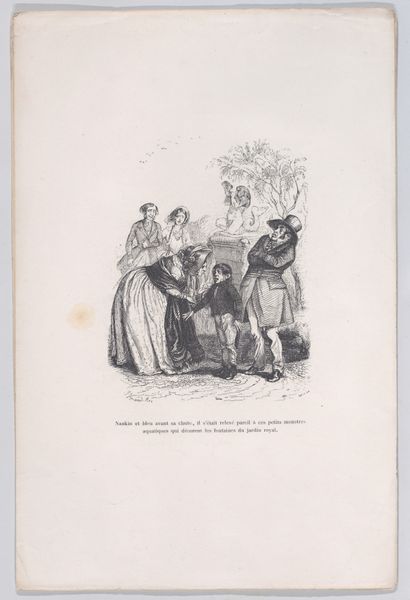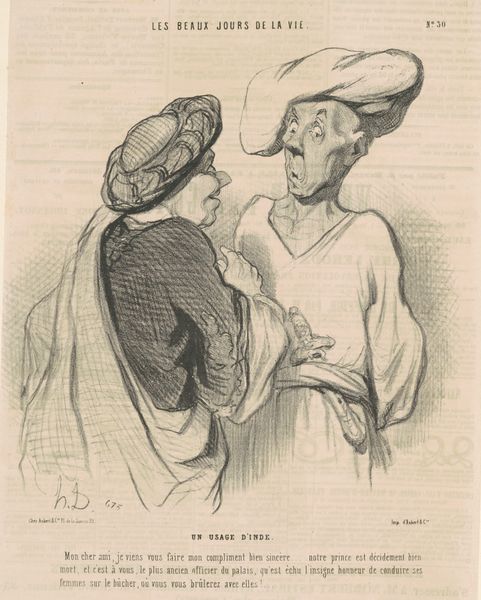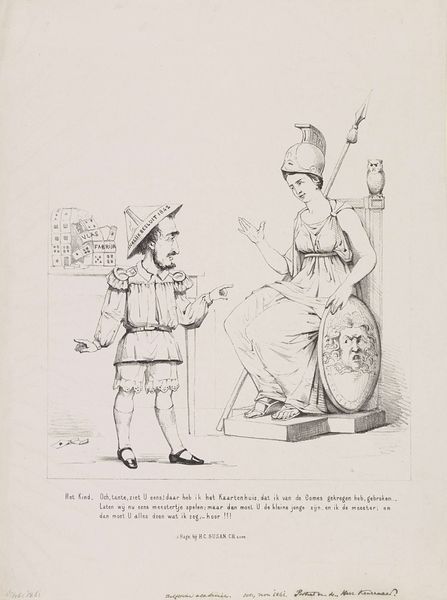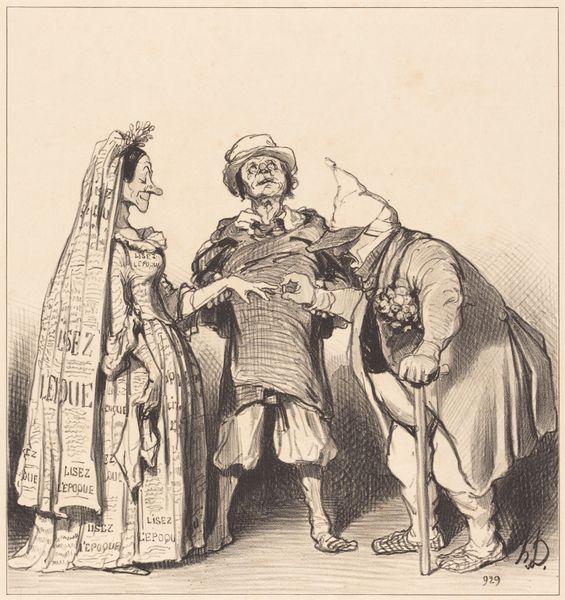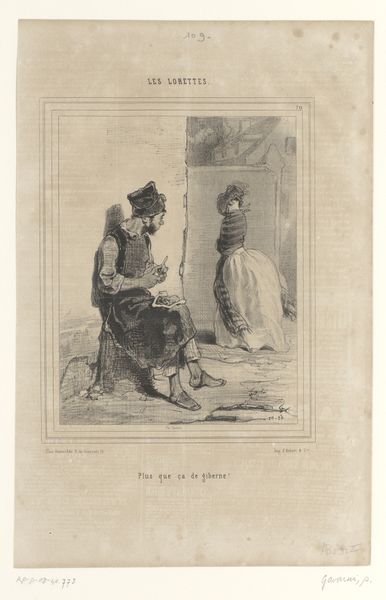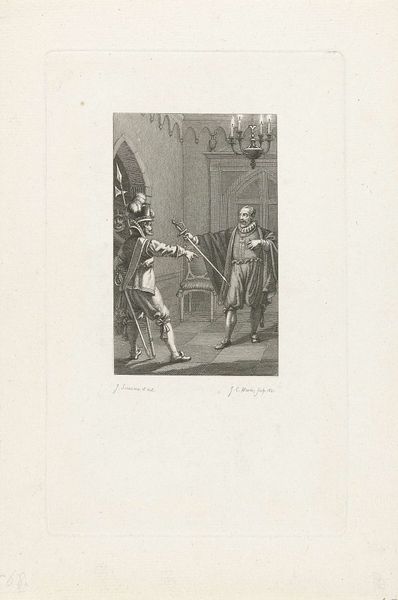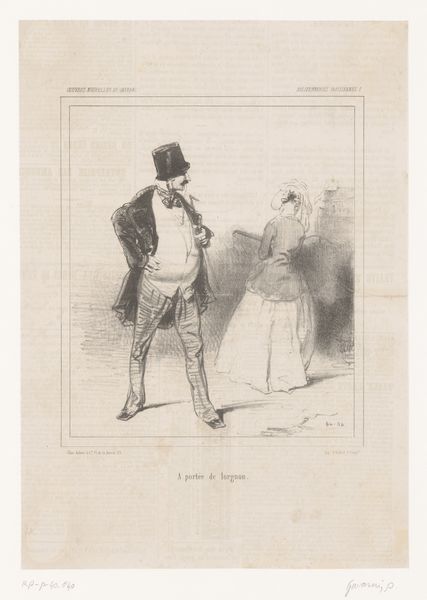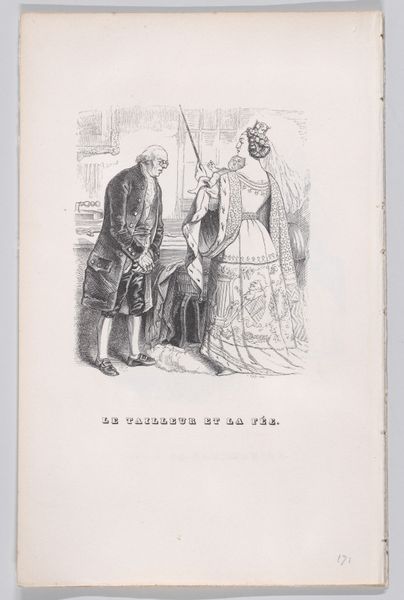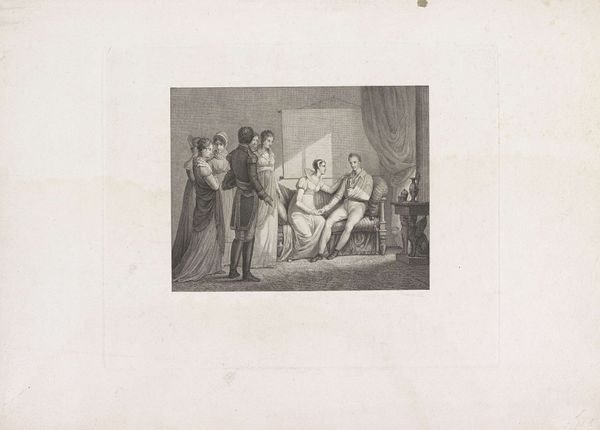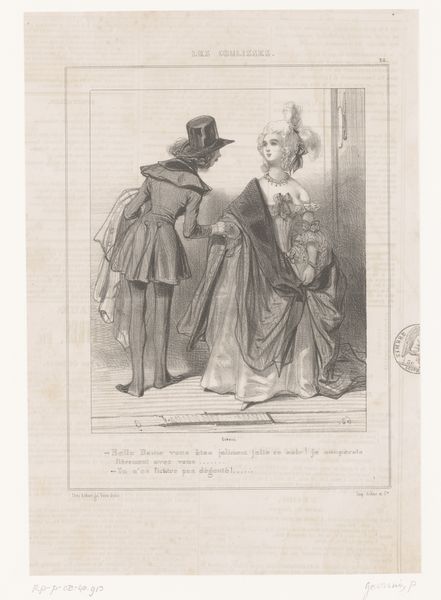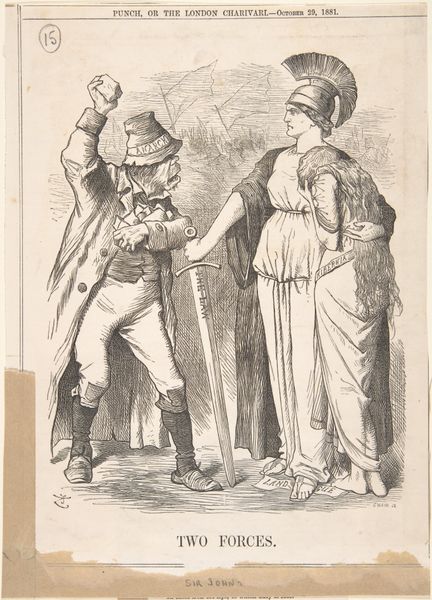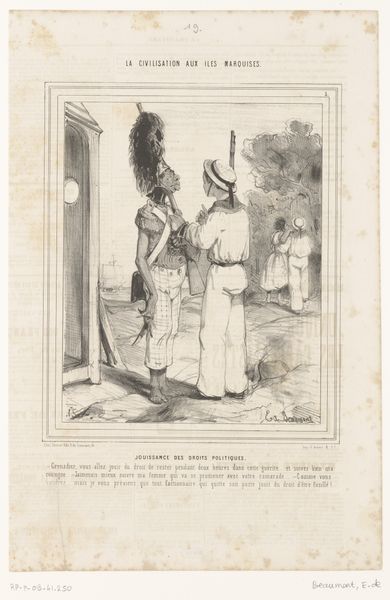
print, engraving
#
portrait
#
narrative-art
# print
#
caricature
#
figuration
#
line
#
genre-painting
#
history-painting
#
engraving
#
modernism
Dimensions: height 275 mm, width 215 mm
Copyright: Rijks Museum: Open Domain
Editor: Here we have "Spotprent op de verkiezing van S. Cool," a print from 1860. It’s a caricature with really fine, delicate lines. There's a crowned woman presenting what looks like a roasted bird to a seated man. What political statements can we find here? Curator: It is crucial to consider the social and political landscape of the Netherlands in 1860. This print engages with themes of power, corruption, and perhaps the fragility of political victory. How does the depiction of the 'stedemaagd'— the city maiden, Amsterdam personified here—relate to ideas about gender and civic virtue during this period? Editor: So the woman is a symbol for Amsterdam? I see she's offering this…cooked bird to the politician. Curator: Precisely. Note the word "Suiker" or sugar on his table. Given the history of Dutch colonial exploitation and the sugar trade, what associations does this conjure about wealth, power, and potentially, exploitation? It raises questions about who benefits from this system. Editor: I didn’t even notice that! The sugar connection adds a darker layer. The text underneath talks about stealing a cabbage from the sugar man and going back north... Is it suggesting some sort of scandal? Curator: The text likely alludes to a specific political event. But regardless of the exact references, it speaks to the potential fleeting nature of fame. What are your thoughts on how the artist critiques the system rather than merely portraying individuals? Editor: It is as if the characters represent something more profound and universal than a single moment in time. Thank you for highlighting the links to gender, politics, and wealth – elements I totally missed. Curator: Exactly. Recognizing how power dynamics are portrayed and challenged in art is vital for meaningful engagement with both the work and the world.
Comments
No comments
Be the first to comment and join the conversation on the ultimate creative platform.
